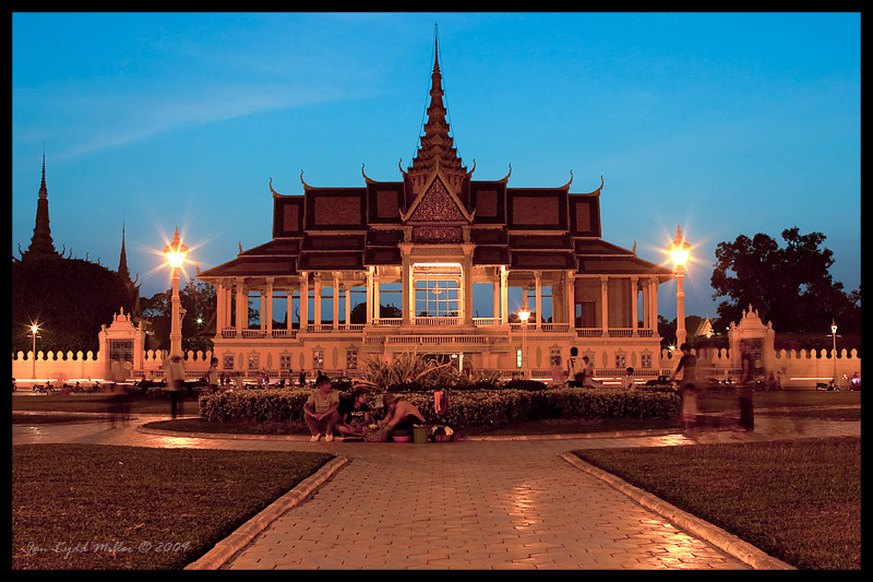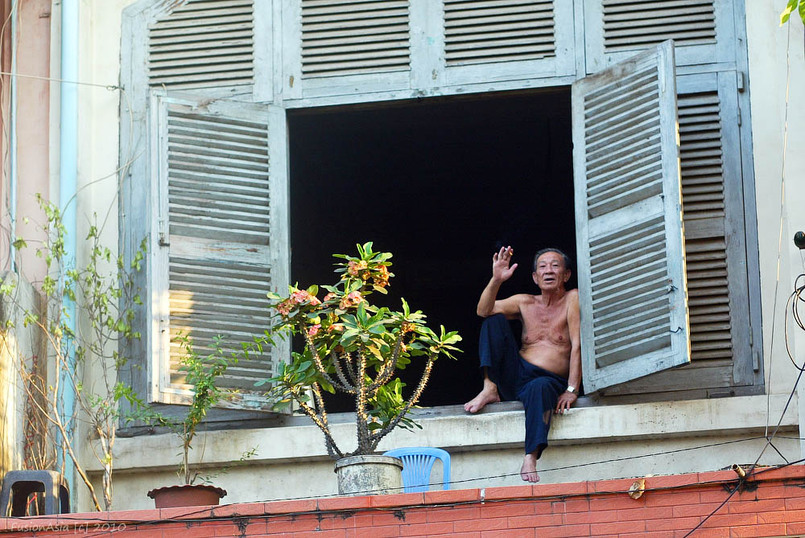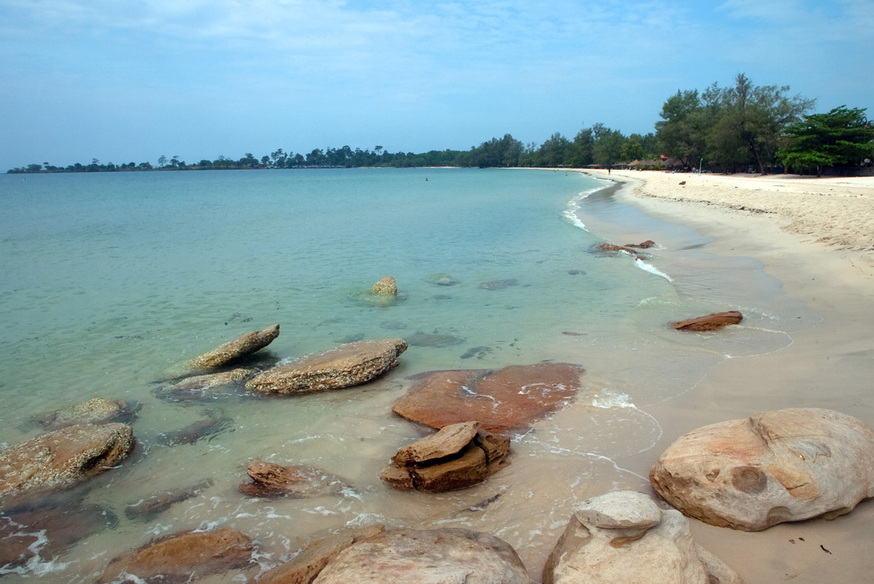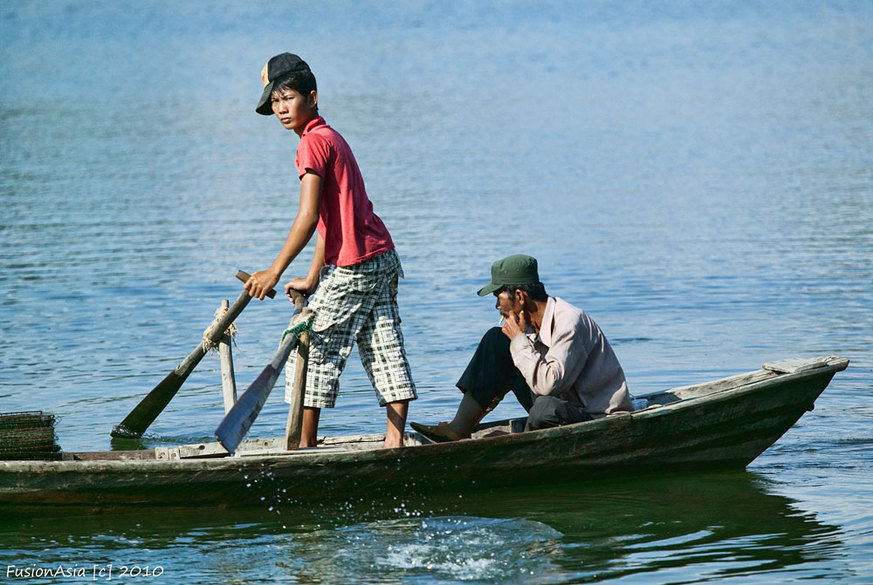Created by Ian Kydd'Miller © 2011 (in conjuction with the Walkabout Hotel, Phnom Penh)
Phnom Penh
Phnom Penh (Khmer: ភ្នំពេញ, pronounced [pʰnum peːɲ] in Khmer and /pəˈnɒm ˈpɛn/ or /ˈnɒm ˈpɛn/ in English[2]) is the capital and largest city of Cambodia. Located on the banks of the Mekong River, Phnom Penh has been the national capital since the French colonized Cambodia, and has grown to become the nation's center of economic activities. Phnom Penh has grown to become the industrial, commercial, cultural, tourist and historical center of Cambodia.
Once known as the Pearl of Asia, it was considered one of the loveliest of French-built cities in Indochina[3] in the 1920s. Phnom Penh, along with Siem Reap and Sihanoukville, are significant global and domestic tourist destinations for Cambodia. Founded in 1434, the city is noted for its beautiful and historical architecture and attractions. There are a number of surviving French colonial buildings, such as the Royal Palace, Phsah Thmei, and other French style buildings along the grand boulevards.
Situated on the banks of the Tonlé Sap, Mekong and Bassac rivers, Phnom Penh is home to more than 2 million of Cambodia's population of over 13 million.[4] It is the wealthiest and most populous city in Cambodia and is home to the country's political hub.
Phnom Penh has a tropical wet and dry climate. The climate is hot year-round with only minor variations. City temperatures range from 18° to 38 °C (64° to 100 °F) and experiences tropical monsoons. Southwest monsoons blow inland bringing moisture-laden winds from the Gulf of Thailand and Indian Ocean from May to October. The northeast monsoon ushers in the dry season, which lasts from November to March. The city experiences the heaviest precipitation from September to October with the driest period occurring from January to February.
The city has two distinct seasons. The rainy season, which runs from May to October, which temperatures can rise up to 40 °C (104 °F) around April and is generally accompanied with high humidity. The dry season lasts from November to April when temperatures can drop to 22 °C (72 °F). The best months to visit the city are November to January when temperatures and humidity are lower.
Courtesy of Wikipaedia
Once known as the Pearl of Asia, it was considered one of the loveliest of French-built cities in Indochina[3] in the 1920s. Phnom Penh, along with Siem Reap and Sihanoukville, are significant global and domestic tourist destinations for Cambodia. Founded in 1434, the city is noted for its beautiful and historical architecture and attractions. There are a number of surviving French colonial buildings, such as the Royal Palace, Phsah Thmei, and other French style buildings along the grand boulevards.
Situated on the banks of the Tonlé Sap, Mekong and Bassac rivers, Phnom Penh is home to more than 2 million of Cambodia's population of over 13 million.[4] It is the wealthiest and most populous city in Cambodia and is home to the country's political hub.
Phnom Penh has a tropical wet and dry climate. The climate is hot year-round with only minor variations. City temperatures range from 18° to 38 °C (64° to 100 °F) and experiences tropical monsoons. Southwest monsoons blow inland bringing moisture-laden winds from the Gulf of Thailand and Indian Ocean from May to October. The northeast monsoon ushers in the dry season, which lasts from November to March. The city experiences the heaviest precipitation from September to October with the driest period occurring from January to February.
The city has two distinct seasons. The rainy season, which runs from May to October, which temperatures can rise up to 40 °C (104 °F) around April and is generally accompanied with high humidity. The dry season lasts from November to April when temperatures can drop to 22 °C (72 °F). The best months to visit the city are November to January when temperatures and humidity are lower.
Courtesy of Wikipaedia
Siem Reap
The name Siem Reap literally means "Siam Defeated". These days, however, the only rampaging hordes are the tourists heading to the Angkor Archaeological Park. This once quaint village has become the largest boomtown and construction site in Cambodia. It is quite laid-back and a pleasant place to stay while touring the temples. It is a nice compromise between observing Cambodian life and enjoying the amenities of modern services and entertainment, thanks to a large expatriate community. Since Siem Reap is a major tourist destination, prices in some instances are higher than elsewhere in Cambodia. Expect to receive almost constant offers for motodop and tuk-tuk rides, along with everything else which drivers may be able to offer to you.
Be sure to pick up your free Siem Reap Angkor Visitors Guide and the equally free and useful Siem Reap Pocket Guide from your hotel/guesthouse. It contains lots of info on Siem Reap and the Angkor Archaeological Park, including hotel/bar/restaurant/shop info, travel info, and maps. For the eco-sensitive tourist, check out "Stay Another Day: Cambodia," a detailed guide with local spots that support the environment and community. Another address is the ConCERT tourist office, a local NGO committed to raising the standards of responsible tourism and ecotourism activities and providing information on the causes and effects of poverty in Cambodia, volunteering opportunities and ecotours.
Courtesy of Wikipaedia
Be sure to pick up your free Siem Reap Angkor Visitors Guide and the equally free and useful Siem Reap Pocket Guide from your hotel/guesthouse. It contains lots of info on Siem Reap and the Angkor Archaeological Park, including hotel/bar/restaurant/shop info, travel info, and maps. For the eco-sensitive tourist, check out "Stay Another Day: Cambodia," a detailed guide with local spots that support the environment and community. Another address is the ConCERT tourist office, a local NGO committed to raising the standards of responsible tourism and ecotourism activities and providing information on the causes and effects of poverty in Cambodia, volunteering opportunities and ecotours.
Courtesy of Wikipaedia
Sihanoukville - Kampong Som
In a land with thousands of years of history, Sihanoukville is a colourful but tragic upstart. A mere fifty years ago, a French-Cambodian construction carved a camp out of the jungle and started building the first deep-sea port of a newly independent Cambodia. Named Sihanoukville in 1964 after the ruling prince of Cambodia, the booming port and its golden beaches soon drew Cambodia's jetsetting elite, spawning the first Angkor Beer brewery and the modernist seven-story Independence Hotel which, claim locals, even played host to Jacqueline Kennedy on her whirlwind tour of Cambodia in 1967.
Alas, the party came to an abrupt end in 1970 when Sihanouk was deposed in a coup and Cambodia descended into civil war. The town – renamed Kompong Som – soon fell on hard times: the victorious Khmer Rouge used the Independence Hotel for target practice and, when they made the mistake of hijacking an American container ship, the port was bombed by the U.S. Air Force. Even after Pol Pot's regime was driven from power, the bumpy highway to the capital was long notorious for banditry and the beaches stayed empty.
Peace returned in 1997 and in the ensuing ten years Sihanoukville has been busy picking up the pieces. First visited only by a few intrepid backpackers, guidebooks still talk of walls pockmarked by bullets, but any signs of war are hard to spot in today's Sihanoukville, whose new symbol seems to be the construction site. After 30 years of housing only ghosts, the Independence Hotel is up and running again, more and more Khmers and expats have settled down to run bars and restaurants, and the knowledge of what the New York Times dubbed "Asia's next trendsetting beach" is starting to spread.
Courtesy of Wikipaedia
Alas, the party came to an abrupt end in 1970 when Sihanouk was deposed in a coup and Cambodia descended into civil war. The town – renamed Kompong Som – soon fell on hard times: the victorious Khmer Rouge used the Independence Hotel for target practice and, when they made the mistake of hijacking an American container ship, the port was bombed by the U.S. Air Force. Even after Pol Pot's regime was driven from power, the bumpy highway to the capital was long notorious for banditry and the beaches stayed empty.
Peace returned in 1997 and in the ensuing ten years Sihanoukville has been busy picking up the pieces. First visited only by a few intrepid backpackers, guidebooks still talk of walls pockmarked by bullets, but any signs of war are hard to spot in today's Sihanoukville, whose new symbol seems to be the construction site. After 30 years of housing only ghosts, the Independence Hotel is up and running again, more and more Khmers and expats have settled down to run bars and restaurants, and the knowledge of what the New York Times dubbed "Asia's next trendsetting beach" is starting to spread.
Courtesy of Wikipaedia
Kampot and Kep
Kampot, the third largest coastal province in Cambodia, shares a border with Vietnam to the east and extends into the Gulf of Siam to the south. Elegant colonial architecture, spectacular natural attractions, and bucolic charm make this province a favorite among locals, expatriates, and more recently, tourists.
Kampot's languid atmosphere and quaint, small-town feel are easy to fall in love with; many who stay in the province do so on the relaxed riverside, where visitors can swim in waters full of bioluminescent plankton or take a smooth kayak ride down the river.
Kampot is more than just a sleepy riverside town, however. The province offers plentiful historical and natural wonders to discover, and serves as a common gateway to Bokor National Park, the beaches of Kep, the beautiful rapids of Toek Chhou and other attractions in southwestern Cambodia.
Bokor National Park is popular for its cool mountain climate and remains a year-round favourite amongst locals and foreigners alike. The scenery from the top is captivating, especially in the morning hours when one can literally touch the clouds and take in the bracing mountain air.
Other attractions include the Popokvil Waterfall where thundering falls provide a cool, refershing pool to dip in. A short distance across the track, the Toek Chhou Rapids is yet another popular tourist attraction. The Prek Ampal Resort, Kampong Trach Mountain Resort and the Anlong Pring Bird Sanctuary are also worthwhile stops in Kampot.






